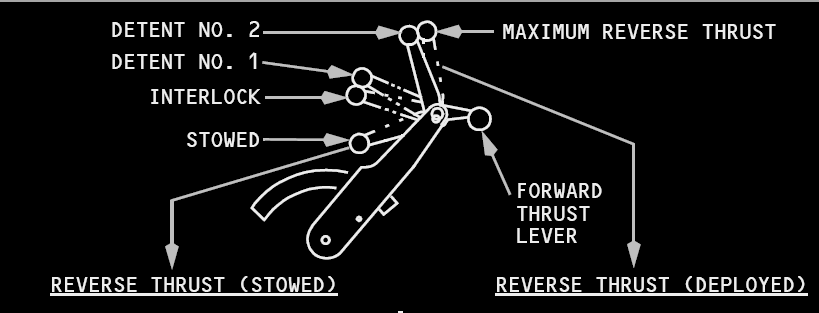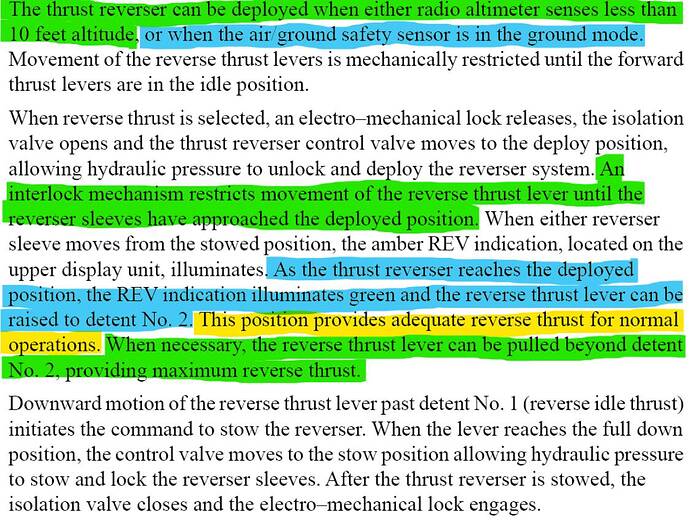Wish MSFS ATC was coherent enough to actually give you realistic vectors. I know I can just provide my own but it’s not quite the same.
I mentioned a pretty interesting RW 737 flight a few posts up (ANC to ADK), for those who have less time to spend, just noted that both AA and Delta have flights between KMIA and KMCO. The flight is all of 30 minutes or so, cruising at around 20K feet. Still get the enjoyment of dealing with a couple of very big, busy airports (especially if you are using the aftermarket Latin VFR MIA which is great) and you have some nice scenery to enjoy for the 5 minutes you are at cruise level.
Flew into Heathrow in real life a few months back. Early AM arrival on a Delta 767-400. Noted that the pilot never used reverse thrust. Wondering if that is due to noise limits at 0700 local or there are occasions where in real life, reverse thrust is not used? I fly a fair amount (vast majority US domestic), that was the first landing I recall where just braking was used to slow down.
Whenever it is possible, reverse will not be used. Landing distance is calculated without reverse anyway.
Why? Because it’s cheaper to change brakes than reverser, because it’s huge mechanical stress to use them.
Noise abatement is another thing.
I know I am incredibly late to the party, but I finally bought a 737 – the -700 for flying in Alaska.
I cannot believe how incredibly well done this aircraft is. I am just stunned.
Yes, I agree. I got the 737-600 for the bargain price of £34. Pretty much a steal!
Bit surprised though that circuit breakers weren’t modelled (not that I ever use them so no loss to me personally) and that the passenger area is fairly low res. Truth be told though great development decisions imo and especially so since fps is fantastic on my PC and with no lag or stutter.
Well, this’ll be dependent on operator. We use detent 2 reverse by default, and our landing data very definitely includes credit for reverse thrust unless we specify otherwise.
Now takeoff data does not include reverse thrust usage in event of an RTO, because depending what you’re aborting for, you may not have it available or want to use it, for directional control reasons.
You can arm VNAV off the ground even if not using LNAV. When we take off in heading select we typically still use VNAV off the ground, and this works in the PMDG. Also worth noting that LNAV won’t kick it as you turn towards the fix; you’ll need to be on an intercept course or select direct MA and then select LNAV.
Lots of different ways to do all this stuff.
Does anyone know if the Parking brake issue with the PMDG is fixed in the last Beta Update? I have not had a chance to test yet, just wondering?
Nope. I expect whatever was changed affected whatever custom systems work PMDG did to set/release the parking brake, and that change is not going to be un-done.
PMDG will have to update the line when SU12 is released or about to release, so the change won’t adversely affect the majority of people not using the SU12 beta.
They most likely used them but didn’t pull past first detent. First detent only opens the reverser vanes but doesn’t spool up the engines. In most airlines first detent is always the minimum required by the SOPs. First detent does provide some braking action but not much, but it will raise the speedbrake lever even if the pilots forgot to arm it.
The reason we may not use reversers sometimes is that:
On dry runways the reversers do not decrease the landing distance required.
On dry runways the reversers only reduce the brake cooling required. So if we have a long enough DRY runway and the autobrake setting required to vacate where we want to results in a brake cooling schedule that is shorter than our planned turnaround we usually won’t use reversers. When brakes are hot, when we’re on stand with chocks on we would release the brakes to allow them to cool down before the next take off. When the runway is not dry it’s a whole different story. On non-dry runways the reversers do decrease the braking distance required.
The reversers in the 737 have 3 detents:
-
1st detent: Reversers open but engines will stay at idle thrust.
-
2nd detent: Reversers open and engines spool up to about 75% N1. This is what EFB calculations with reversers are made with.
-
3rd detent: The engines spool up a bit more than with 2nd detent. This is excess reverser thrust beyond what any calculation accounts for. It’s “just a little extra” and not needed if calculations are correct. It’s just there in case you need it.
In many airlines including mine we will always use at least 1st detent. It’s a muscle memory thing and also there to make sure the speedbrakes do deploy, which is very important to get full weight on the wheels as soon as possible.
Are there a configuration in msfs or PMDG to approximate to that? it would be nice we could recreate that reverse detents in sim.
Nope, not that I’m aware of by default.
I don’t know if it is me or not, but I noticed that there is a problem with uploading a flight plan and installing it into the PMDG Boeing 737 series. Once it has been activated, it ignores the flight path and flies in that direction without flying the course. I have used NAV and activated the FMC and autopilot for it to follow the route, but it doesn’t. Also it is a very broken plane due to the parking brake not working and therefore doesn’t even move once you land at your destination, taxiing this plane doesn’t do what it should once you have been airborne. PMDG has a lot to answer for, due to the prices they ask for their aircraft. Bredok Boeing 737 does fair better. Perhaps PMDG should take a leaf out of ‘their’ book! ![]()
They did. You’re on the beta version of the sim and therefore you must expect that not everything works as it should in the release version.
For your route following issue check that there are no assistants active in MSFS.
absolutely.
As mentioned above, you’re on the beta of the sim so that concludes that particular conversation.
The PMDG aircraft behaves EXACTLY as per the real aircraft when it comes to programming and following a route. That’s also user error I’m afraid.
If you’re using the SU12 beta then that’s why, they already mentioned this in their forums. I did read on their forums that they’re potentially looking at having beta builds available but for right now their plane doesn’t work with the SU12 beta.
I use the A320 thrustmaster.
You know when you talk about “detents…” I’m picturing detents as in the ‘flip up reverse, climb, flex and TOGA detents’ on the A32nx…
What are these detents that you are talking about? I’ve never really looked at my reverse thrust on the 737 but only a couple of times when I was seeing if my settings worked i.e holding the button on the throttle and moving the throttle back up, it seems to be this fluid movement with the reverse thrusts like there is when i use the thrusts normally which also corresponds with when seeing the engine displays move up and down when activating, increasing, decreasing and deactivating them on touchdown, roll and roll out on the runway
Are there actually subtle detends that I didnt see or notice?
What are these detents that you are talking about?
These aren’t clickity notches you feel like on the airbus. They’re just changes in how the lever feels.
When they’re stowed and you pull a bit you can feel when the reversers are engaged and you get a REV indication on your upper DU. The engines won’t spool up. Then the rest of the travel has a different feel than when you pulled it out of the stowed position. When you reach second detent the travel resistance increases and to pull further to third detent you need to pull with a bit more force. The pull from stowed to interlock to 1st detent is also about feel but mainly about “timing”. It’s like a rhythm thing. You pull and for a fraction of a second the levers won’t move until the reversers on the engines get in position. When they are you can pull to 1st detent and beyond. The travel from 1st to 2nd is the longest. It requires the least pulling force and it’s continuous, meaning you can stop in an intermediate position and the engines will stop spooling up right there. We don’t do that though. We always use either 1st detent or all the way to 2nd detent depending on what we calculated with the EFB. The travel from 2nd to 3rd (Maximum reverse thrust) is very short, a bit harder to pull and N1 increases from 75%N1 to about 86%N1.


